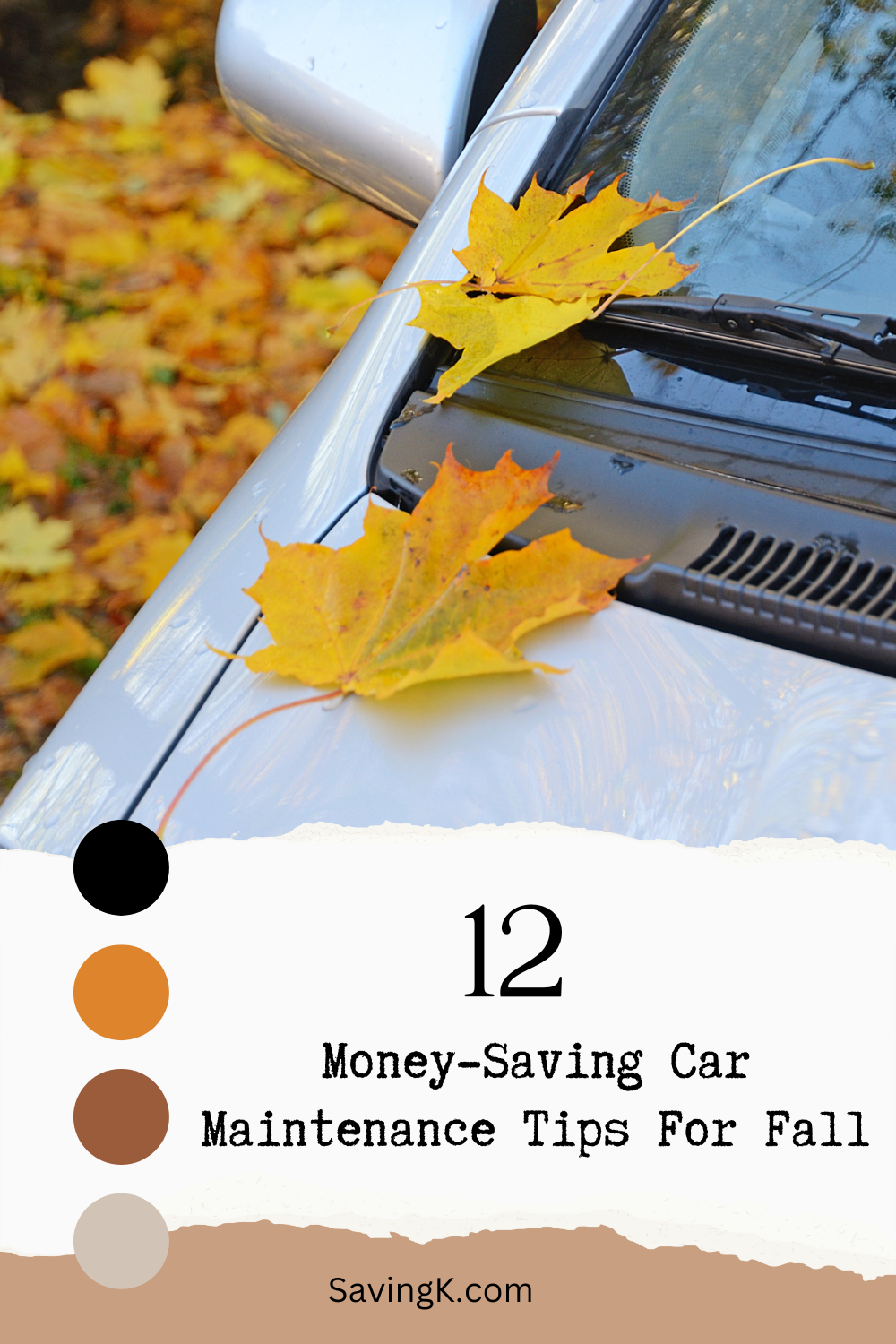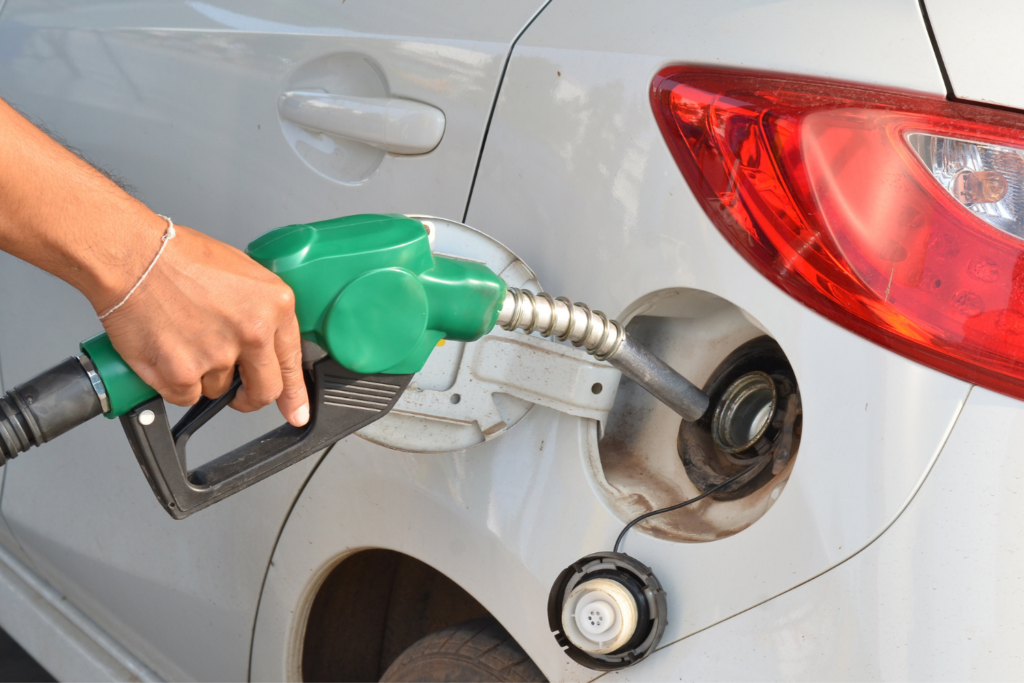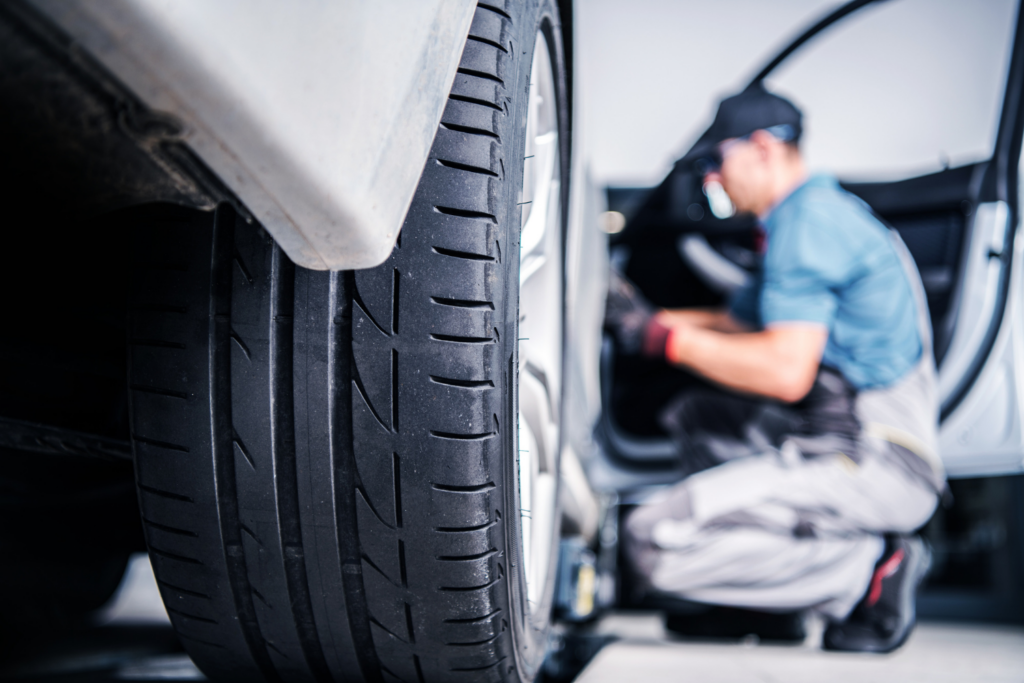
As the leaves start to change and the temperatures drop, it’s time to think about more than just pumpkin spice lattes and cozy sweaters. Fall is the perfect season to give your car some much-needed attention to ensure it runs smoothly through the colder months ahead. The good news is that proper fall car maintenance can also save you money, both in the short term and over the long run. In this article, we will explore some fall-specific car maintenance tips that can help you keep your vehicle in tip-top shape while keeping your wallet happy.
Contents
- 1. Check Your Tires
- 2. Rotate Your Tires
- 3. Replace Worn Wiper Blades
- 4. Check Your Battery
- 5. Inspect Your Brakes
- 6. Change the Oil and Filters
- 7. Inspect and Replace Spark Plugs
- 8. Check Your Heating and Cooling System
- 9. Keep Your Car Clean
- 10. Store an Emergency Kit
- 11. Fuel Efficiently
- 12. Review Your Auto Insurance Policy
- Conclusion
1. Check Your Tires
One of the most critical aspects of fall car maintenance is checking your tires. As temperatures drop, so does tire pressure. Under-inflated tires can lead to reduced fuel efficiency and increased wear and tear on your tires. To save money, regularly check your tire pressure and inflate them to the manufacturer’s recommended levels. Properly inflated tires will not only save you money on gas but also extend the life of your tires.
2. Rotate Your Tires
Rotating your tires is a simple yet effective way to save money in the long run. Tire rotation ensures that your tires wear evenly, which means you won’t have to replace them as often. Uneven tire wear can lead to costly replacements and poor handling. Consider rotating your tires every 6,000 to 8,000 miles or as recommended by your vehicle’s manufacturer.
3. Replace Worn Wiper Blades
Fall brings unpredictable weather, including rain and potential snowfall. Worn-out wiper blades can severely limit your visibility in adverse conditions, increasing the risk of accidents. Replacing your wiper blades is an inexpensive and straightforward maintenance task that can prevent costly accidents and keep you safe on the road.
4. Check Your Battery
Cold weather can have a detrimental impact on your car’s battery. Have a mechanic test your battery’s health and charge before the cold temperatures hit. Replacing a failing battery is much cheaper than dealing with a dead battery in the middle of winter, especially if it leaves you stranded.
5. Inspect Your Brakes
Brakes are crucial for safety, and neglecting brake maintenance can lead to costly repairs or accidents. Have your brakes inspected, and replace worn brake pads or rotors as needed. Early intervention can save you money by preventing further damage to your braking system.
6. Change the Oil and Filters
Regular oil changes are crucial for maintaining your engine’s health. In fall, it’s a good idea to switch to a thinner, winter-grade oil that flows better in colder temperatures. Replacing your oil filter is also essential to keep your engine running efficiently. Neglecting oil changes can lead to engine damage, which is a costly repair you want to avoid.
7. Inspect and Replace Spark Plugs
Faulty spark plugs can reduce fuel efficiency and engine performance. Replacing them is relatively inexpensive and can save you money on gas in the long run. Properly functioning spark plugs ensure your engine operates efficiently.
8. Check Your Heating and Cooling System
Before the cold weather sets in, make sure your heating system is in good working order. A malfunctioning heater can make winter driving uncomfortable and even dangerous. Additionally, a well-maintained cooling system can prevent your engine from overheating in traffic, saving you from costly repairs.
9. Keep Your Car Clean
While not a traditional maintenance task, keeping your car clean in the fall can prevent rust and corrosion. Road salt and debris can damage your vehicle’s finish and undercarriage. Regular washing and waxing can extend the life of your car’s body and help you avoid costly rust repairs.
10. Store an Emergency Kit
Consider creating or updating an emergency kit for your car. This kit should include items like a flashlight, blankets, jumper cables, and basic tools. Being prepared can save you money by preventing costly tows or roadside assistance fees.
11. Fuel Efficiently
Another money-saving tip for fall car maintenance is to fuel your vehicle efficiently. As the temperatures drop, it’s a good idea to keep your gas tank relatively full. This helps prevent moisture from accumulating inside the tank, which can lead to fuel line freeze-ups in extremely cold weather. Additionally, using the recommended octane level for your vehicle can optimize fuel efficiency and save you money on gas over time. Avoid idling excessively or revving the engine unnecessarily, as these habits can also waste fuel and increase your expenses. By fueling efficiently, you not only save money but also ensure your vehicle operates smoothly in the fall and winter months.
12. Review Your Auto Insurance Policy
While not a direct car maintenance tip, reviewing your auto insurance policy in the fall can be a smart financial move. As the year progresses, your driving habits and needs may change, and your insurance requirements could evolve as well. To save money, take the time to assess your current coverage and compare it to your driving situation.
Consider the following:
- Coverage Levels: Are you adequately covered in case of an accident or other unforeseen events? You might need to adjust your coverage to better protect your financial interests while avoiding overpaying for unnecessary coverage.
- Deductibles: Increasing your deductible can lower your monthly premiums, but it also means you’ll pay more out of pocket in the event of a claim. Weigh the short-term savings against the potential long-term costs.
- Discounts: Verify with your insurance company to determine your eligibility for any available discounts. Numerous insurers provide cost reductions for maintaining a safe driving record, bundling policies, or equipping your vehicle with anti-theft devices.
- Mileage: If you’re driving less, you might be eligible for a lower rate. Some insurance companies offer pay-as-you-go or usage-based insurance, which can save you money if you’re not driving as much during the fall and winter months.
- Shop Around: Don’t hesitate to shop around and compare auto insurance quotes from different providers. This can help you find a better deal and potentially save you a significant amount on your premiums.
By reviewing and potentially adjusting your auto insurance policy in the fall, you can ensure you’re getting the coverage you need at the best possible price, ultimately saving you money and providing peace of mind throughout the season.
Conclusion
In conclusion, fall car maintenance is not only essential for your vehicle’s longevity and safety but also for your wallet. By taking these money-saving car maintenance tips to heart, you can ensure that your car remains reliable and efficient through the fall and into the winter months. Remember that investing a little time and money in maintenance now can save you from more significant expenses down the road. So, roll up your sleeves and get ready to enjoy a worry-free fall season on the road!
Featured Image Credit: Deposit Photos





